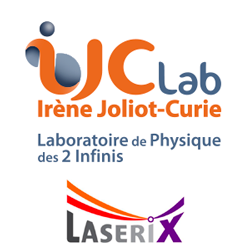 We have investigated high harmonic generation in an argon gas cell driven by two femtosecond laser pulses separated by a variable delay ranging from 500 fs to 100 ps. Experiments were performed at the LASERIX IR-EUV facility using an amplified 10 Hz CPA Ti:Sapphire laser system on a beamline delivering 50 fs pulses at 800 nm with energy up to 15 mJ. In the case of a non-zero time delay we studied the optimal conditions for equilibrated double pulse generation despite perturbation of the generating medium induced by the first pulse. We showed how high harmonic double pulse generation varies with the gas pressure, the excitation energy, the delay and the relative polarization between the two laser pulses. Due to the very high spatial overlap of the two generating IR beams throughout the gas cell, results obtained here can reasonably be extrapolated to perfectly collinear pulses. Besides, we confirmed that the observed behavior does not depend on the relative polarization states, parallel or crossed, of the two IR generating pulses. Moreover, the spectra of the two EUV pulses remain identical. These three properties are of great interest for plasma-based soft X-ray laser seeding experiments aiming at probing the gain and polarization dynamics of the amplifier stage. This type of study gives also insight into the physics of very high repetition rate harmonics, above 1 GHz.
We have investigated high harmonic generation in an argon gas cell driven by two femtosecond laser pulses separated by a variable delay ranging from 500 fs to 100 ps. Experiments were performed at the LASERIX IR-EUV facility using an amplified 10 Hz CPA Ti:Sapphire laser system on a beamline delivering 50 fs pulses at 800 nm with energy up to 15 mJ. In the case of a non-zero time delay we studied the optimal conditions for equilibrated double pulse generation despite perturbation of the generating medium induced by the first pulse. We showed how high harmonic double pulse generation varies with the gas pressure, the excitation energy, the delay and the relative polarization between the two laser pulses. Due to the very high spatial overlap of the two generating IR beams throughout the gas cell, results obtained here can reasonably be extrapolated to perfectly collinear pulses. Besides, we confirmed that the observed behavior does not depend on the relative polarization states, parallel or crossed, of the two IR generating pulses. Moreover, the spectra of the two EUV pulses remain identical. These three properties are of great interest for plasma-based soft X-ray laser seeding experiments aiming at probing the gain and polarization dynamics of the amplifier stage. This type of study gives also insight into the physics of very high repetition rate harmonics, above 1 GHz.





